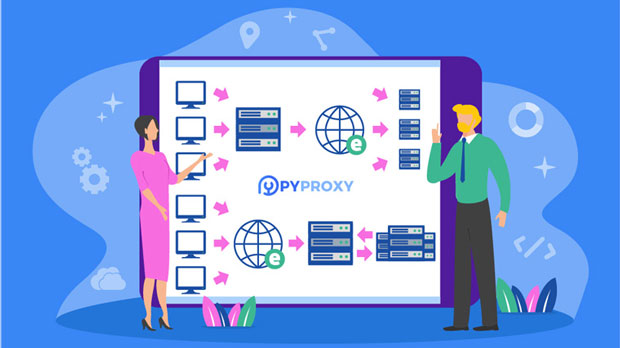In which scenarios is it not recommended to use the Socks5 Configurator?
socks5 proxies are often used for various online privacy and security purposes, providing users with the ability to route their internet traffic through an intermediary server. However, while Socks5 configurators are highly versatile, they are not suitable for all situations. Certain use cases may expose users to risks or inefficiencies, making it essential to understand when using a Socks5 configurator might not be advisable. This article will delve into the scenarios where relying on a socks5 proxy configuration can lead to unintended consequences, exploring potential security risks, performance issues, and technical limitations. It is crucial for users to assess their needs before opting for this technology. 1. Security Concerns with Sensitive DataWhen dealing with highly sensitive information, such as banking details, personal identification information (PII), or confidential business data, using a Socks5 configurator may not be the best option. Although Socks5 can help mask your IP address, it does not inherently encrypt your traffic, which can leave your data vulnerable to interception. For users who prioritize strong encryption and secure communication, a VPN (Virtual Private Network) or other encrypted solutions are generally better choices. Socks5, being a relatively simple proxy, routes traffic without encryption, which means that your data is still susceptible to man-in-the-middle attacks. If you need to protect sensitive information, relying on a Socks5 proxy could expose your privacy rather than safeguard it.2. High-Risk Activities or Illegal Online BehaviorEngaging in high-risk online activities, such as hacking, illegal downloading, or accessing restricted content, is a scenario where Socks5 might not provide the protection it seems to offer. While it can anonymize your IP address, it does not offer the same level of anonymity as some other tools. Additionally, since Socks5 proxies are often not encrypted, your activity could be traced back to your real identity with some effort.Law enforcement and cybercrime investigators often have the means to trace proxy traffic back to its source, especially if the proxy server is weakly secured or located in a jurisdiction with strict data retention laws. For these activities, relying on a more secure and anonymous service, such as a VPN with strong encryption and a no-logs policy, would offer better protection against detection.3. Inconsistent Performance in High-Bandwidth ApplicationsSocks5 configurators are often favored for their lightweight and efficient nature. However, when it comes to high-bandwidth applications such as streaming HD videos, gaming, or transferring large files, the performance of a Socks5 proxy may not be reliable enough. Due to the nature of the proxy setup, network congestion and high latencies can cause slowdowns, buffering, or even disconnections during these intensive tasks.Socks5 proxies are not designed with high-volume, real-time data transfer in mind. If your primary use case involves activities like streaming, online gaming, or large data transfers, you may experience a significant reduction in performance compared to a dedicated VPN or other specialized proxy protocols that are optimized for speed and bandwidth efficiency.4. Lack of Support for IPv6Another critical scenario where Socks5 configurators might not be suitable is when you need to work with IPv6 addresses. While most Socks5 proxies are designed to handle IPv4 traffic, they do not natively support IPv6, which is becoming increasingly important as the internet continues to evolve. If you are working in a network environment that requires IPv6 support, using a Socks5 proxy may result in errors or reduced connectivity. For instance, your internet service provider (ISP) or network environment may utilize IPv6 for local or regional access, and a Socks5 proxy that only supports IPv4 could cause connection issues. In such cases, it’s important to use a proxy solution or VPN that explicitly supports IPv6 to ensure compatibility and seamless connectivity.5. Inadequate Protection for P2P ActivitiesFor users engaging in peer-to-peer (P2P) file-sharing, torrents, or other distributed network activities, relying on a Socks5 proxy can be problematic. While Socks5 proxies can hide your IP address, they do not offer full protection against network surveillance, especially when it comes to tracking torrent traffic. P2P activities often rely on direct connections between users, and without the proper encryption or anonymity mechanisms, your online activities can still be traced back to your real identity. Additionally, certain torrent sites and networks actively monitor the use of proxies and may flag or block traffic originating from a Socks5 configuration. In this case, a VPN with dedicated P2P support and built-in privacy protections would provide a better level of security and anonymity.6. Compatibility Issues with Certain ApplicationsSome applications, especially those designed for business or enterprise use, may not be compatible with Socks5 proxies. Software such as secure email clients, specialized databases, or certain enterprise tools might have specific requirements for proxy configurations that Socks5 does not meet.For instance, enterprise networks often rely on complex authentication mechanisms or require specific handling of network traffic, which a basic Socks5 proxy may not support. If you're using such specialized applications, it’s crucial to ensure that the proxy configuration is compatible with the software you're using. Incompatibilities may lead to service disruptions, connectivity issues, or the failure of critical operations.7. Limited Compatibility with Certain Websites and ServicesCertain websites, streaming services, and online platforms may detect and block traffic originating from proxy servers, including those using the Socks5 protocol. This is especially common in the case of popular streaming platforms that are highly sensitive to VPN and proxy traffic to prevent region-locking or unauthorized access to content.Using a Socks5 configurator to access such services might result in your IP being blocked or throttled, limiting your ability to access the desired content or services. Some services have advanced algorithms that can detect and block proxy traffic, making Socks5 an unreliable choice for bypassing geographical restrictions. If you intend to use these services, alternative methods like VPNs that offer more advanced obfuscation techniques might be more effective.8. Lack of Comprehensive Logging and Monitoring CapabilitiesFor users who need detailed logs and monitoring for their internet activity—such as businesses or organizations that need to ensure compliance with regulatory requirements—a Socks5 configurator may not provide the necessary features. Socks5 proxies are typically designed to be lightweight and basic, with limited support for logging or activity monitoring.Businesses that rely on detailed records of network usage may find that Socks5 does not meet their compliance or auditing needs. For these scenarios, a more robust solution, such as a managed VPN with enterprise-level logging and monitoring features, would be more appropriate to ensure accountability and transparency.ConclusionWhile Socks5 proxies offer certain advantages, they are not suitable for every online activity or user need. They are best used for basic anonymity, but when it comes to high-risk activities, sensitive data, performance demands, or specialized use cases, users should carefully assess whether Socks5 is the right choice. In many cases, more secure and robust solutions such as VPNs with encryption, high-bandwidth optimization, and comprehensive support may offer better protection and performance. It’s crucial for users to fully understand their requirements and evaluate the risks before opting for a Socks5 configuration in their online activities.
2025-01-14

























































